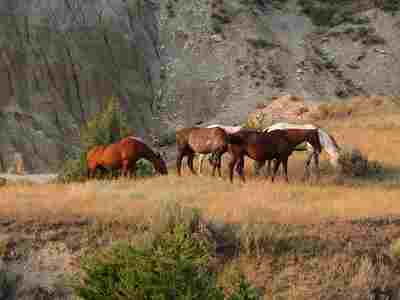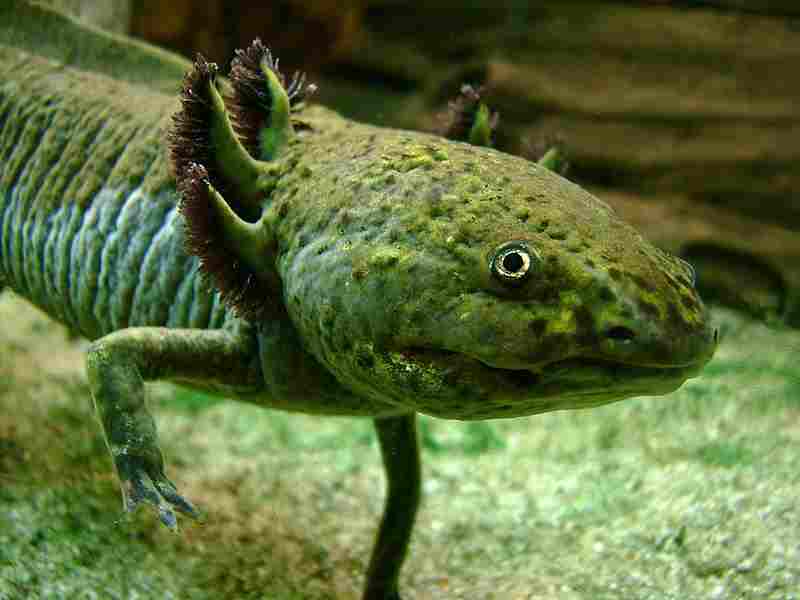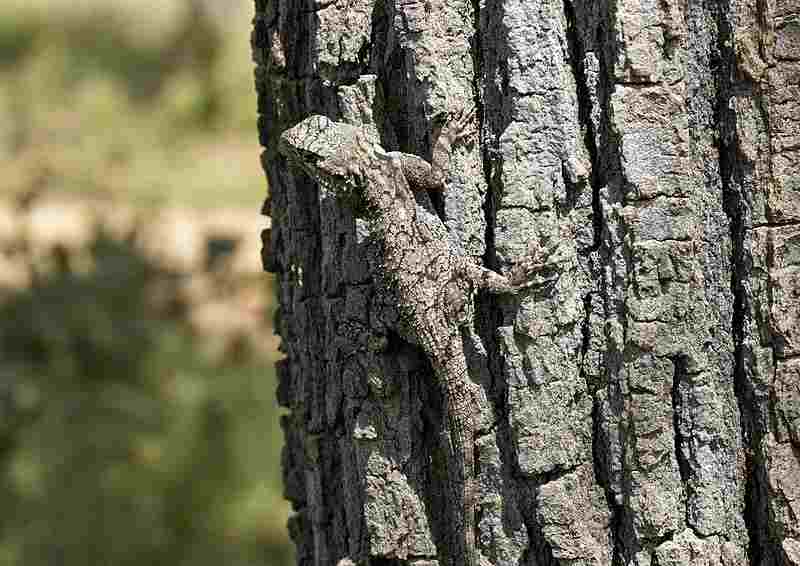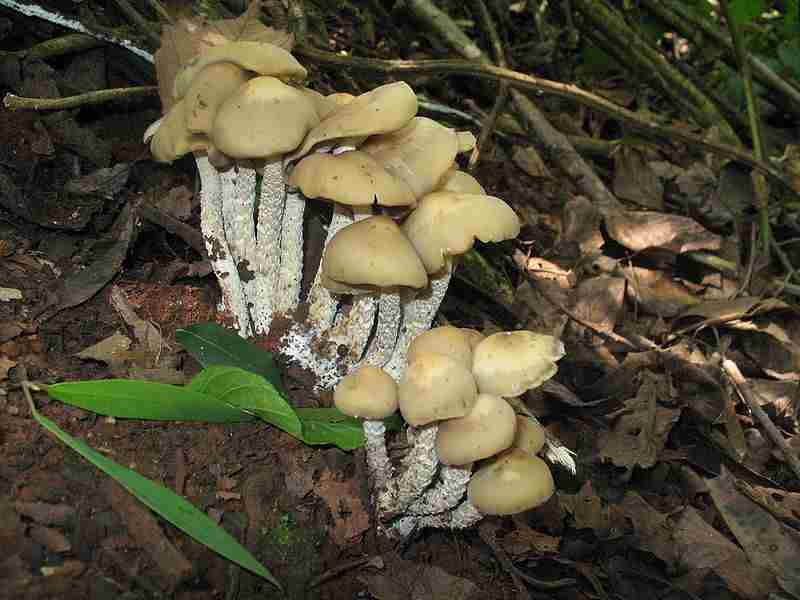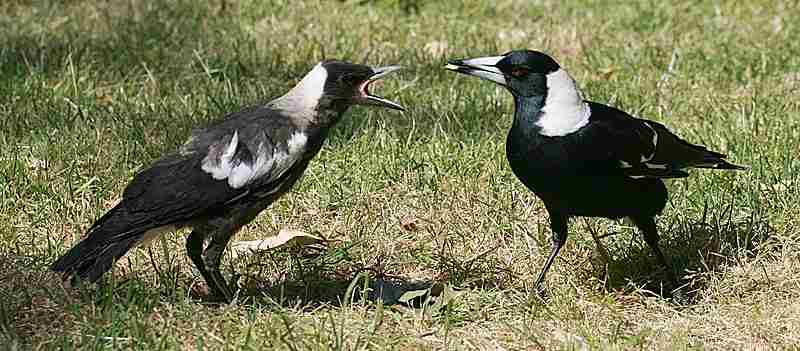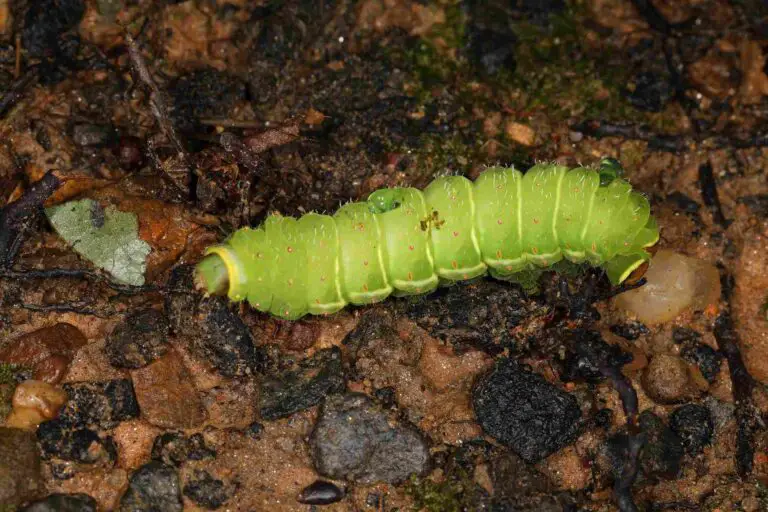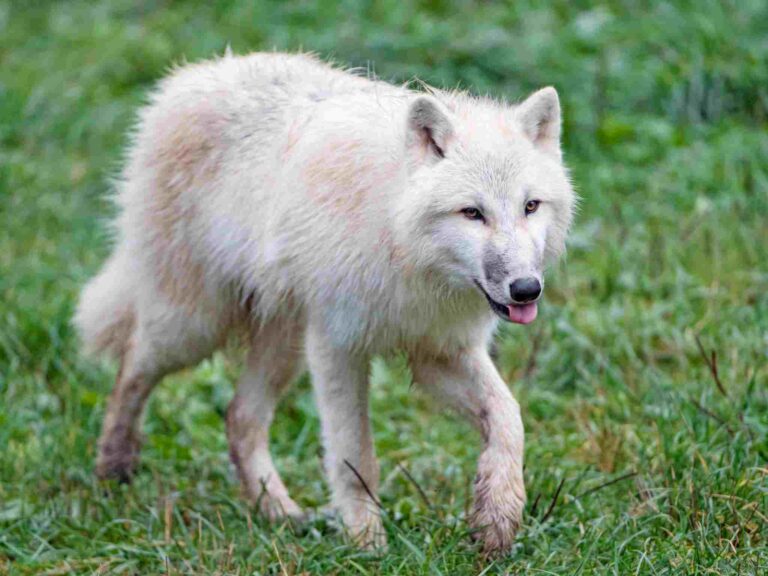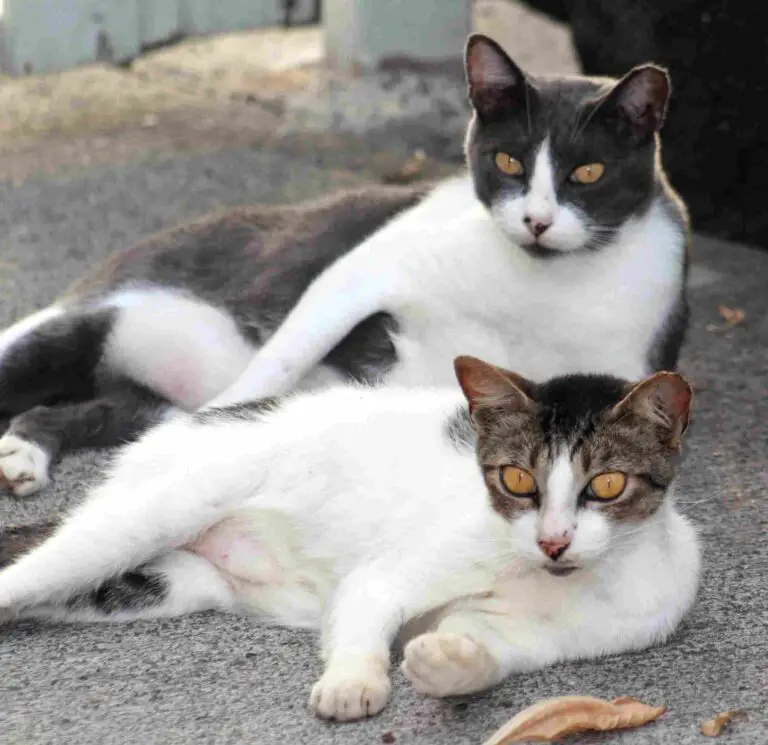5+ Biotic Factors in Temperate Grasslands and Their Characteristics Discussed
Biotic factors in temperate grasslands are; autotrophs, herbivores, carnivores, omnivores, decomposers, and trophic relations between these organic groups.
This article discusses the biotic factors in temperate grasslands and their characteristics, as follows;
1). Temperate Grassland Autotrophs (as one of the Biotic Factors in Temperate Grasslands)
Temperate grasslands are large, diverse ecosystems characterized by the dominance of various autotrophs, especially plants like grasses and perennial forbs [14].
These autotrophic organisms play a major part in the sustenance of biodiversity, and functionality, of temperate grassland ecosystems.
They constitute the foundation of the food chain, support diverse population of herbivores, and contribute to soil conservation as well as nutrient recycling.
Types and Examples of Autotrophs in Temperate Grasslands
The types of autotrophs that occur in temperate grasslands depend on factors like soil conditions, specific geographic location, and climate.
Grasses are the dominant plant category, and encompass a wide variety of native (and invasive) species that have adapted to the specific conditions of each grassland region.
Some grass species commonly found in temperate grasslands include;
1. Ryegrass
2. Buffalo grass
3. Fescue
4. Bluegrass
Asides typical grasses, other plant types like sedges, herbaceous legumes and forbs also occur, with examples including; clovers, sunflowers, and dandelions.
It must be noted that both vascular and non-vascular plants are found in temperate grasslands, although vascular plants are highly dominant. Some non-plant microbes in the biome are also autotrophic.
Example of these other autotrophs are mosses, lichens, and cyanobacteria; which sometimes support each other through symbiotic relations [7].

Productivity of Autotrophs in Temperate Grasslands
The relatively-high productivity of temperate grassland autotrophs is driven by their ability to rapidly photosynthesize, through efficient utilization of available solar energy and carbon dioxide to produce energy-rich biomass.
These autotrophs are well-adapted to the seasonal fluctuations in precipitation and temperature, with numerous species exhibiting strategies like regrowth or dormancy in order to survive harsh conditions.
Importance of Autotrophs as Biotic Factors in Temperate Grasslands
Autotrophs are biotic factors because they are organic in origin and composition; comprising of living cells. They are important to the temperate grassland as primary producers, food sources, and tools for carbon sequestration and soil stabilization.
Primary production is a role played by autotrophs like grasses and forbs, which form the foundation of the food chain in temperate grasslands.
They are relevant for their ability to capture light rays from the sun, and convert it into bioenergy that is stored in organic compounds like sucrose [5].
Such organic compounds can be consumed as a source of nourishment to herbivores, which are in turn consumed by other heterotrophic organisms in higher levels of the energy pyramid.
Food provision is another function of autotrophs in temperate grasslands, which serve as essential food sources for herbivores, including grazers like deer, Mongolian gazelles (Procapra gutturosa), and bison.
This implies that the species-richness, diversity and abundance and diversity of autotrophs directly influence the dynamics of herbivore populations and the biodiversity of the entire ecosystem.
By means of their extensive root systems, grasses help to stabilize the soil, enhancing the retention of nutrients and mitigating soil erosion [11]. Their growth and biodegradation, contribute to soil organic matter, carbon content, and nutrient cycling.

Carbon sequestration is yet another important phenomenon that can be attributed to biotic factors in temperate grasslands.
Grasslands are generally effective and important as carbon sinks, and the significant productivity of autotrophs increases the scale at which carbon dioxide from the atmosphere is sequestered.
This dynamic helps mitigate the impact of greenhouse gases and control the rate of climate change in such localities.
Complex biotic interactions are fostered by the presence of various species of forbs and grasses in temperate grasslands.
Such interactions include predation, competition and mutualism; all of which contribute to the ecological resilience of the grassland biome.
*Interaction of Abiotic and Biotic Factors in Grasslands
In temperate grasslands, there is continuous interaction between biotic and abiotic factors, which contributes to the evolutionary development of the ecosystem.
Abiotic factors like soil minerals, precipitation, sunlight availability and temperature, may directly influence the productivity and distribution of autotrophs [13].
An instance of this influence is observed in the dominance of drought-tolerant grasses in temperate grassland regions with low rainfall, and the abundance of other species in areas with more consistent precipitation.
Biotic factors, including herbivores and predators, also exert selective pressures on autotrophic plant species.
Grazing by herbivores can impact plant survival, growth and abundance, shaping the composition and diversity of the plant community. Predation by carnivorous insects and mammals, may regulate herbivore populations, indirectly affecting the abundance and diversity of autotrophs.
The interactions between autotrophs and herbivores, referred to as herbivory, can trigger complex, trophic feedback loops. For example, overconsumption of autotrophic biomass by herbivores can lead to a decrease in gross plant productivity, influencing the herbivore populations and eventually impacting the entire food web.
Interplay of biotic and abiotic factors in temperate grasslands is fundamental to sustaining (and assessing) the dynamics and resilience of these ecosystems.
The ability of autotrophs to adapt to variable environmental conditions and interact with other organisms, is one of the reasons why biodiversity is maintained in most temperate grasslands. It is also central to nutrient cycling, and energy transfer within these unique environments.
2). Temperate Grassland Herbivores
Temperate grasslands are ecologically significant habitats, and support a diverse array of herbivorous consumers, which are core biological components of these ecosystems.
Herbivores in temperate grasslands play various roles in energy flow, seed dispersal, nutrient cycling, and equilibrium-maintenance between plants and animals.
Their feeding habits influence the structure(s) of plant communities and the overall health of the grassland ecosystem.
Examples of Herbivores in Temperate Grasslands
Some of the prominent herbivores that live in temperate grasslands are; Mongolian gazelle, bison, and feral horses [4].
Gazelles are agile herbivores known for their high adaptiveness to varying grassland conditions. They feed mainly on herbaceous plants like grasses, and are involved in seed dispersal within their habitat.
Bison are a group of large grazers that are iconic in temperate grassland ecosystems. Their grazing activities help maintain the diversity and productivity of grasslands by facilitating the growth of new grass shoots and creating spaces for cohabitation by other plant species.
Feral horses, also referred to as mustangs, are another group of herbivores that feed primarily on forbs and grasses. Their feeding can affect nutrient cycling and plant composition in grassland ecosystems.

Importance of Herbivores in Temperate Grassland Ecosystems
Herbivores exert grazing-pressure on plant communities, in such a manner that controls the magnitude and abundance of plant biomass.
Their consumption of plant matter prevents overgrowth, promotes the sprouting of new shoots, and maintains the health of both the plant community, and the entire grassland.
Seed dispersal is also a function of many herbivores in temperate grasslands, which disperse seeds by consuming plant materials like fruits, and subsequently excreting the seeds in different locations [10]. This contributes to spatial dispersal and colonization by plant species.
Herbivores are involved in nutrient cycling. As they ingest plants, they derive nutrients from the plant material. When herbivores excrete waste, they return nutrients in the waste, into the soil, which is then taken up and utilized by plants, thereby completing the nutrient cycle.
Trophic regulation by herbivores is their ability to function as intermediaries between primary producers (plants) and higher consumers (carnivores and omnivores). Their feeding activities and occupancy of the habitat; influence predator-prey dynamics and trophic interactions within the food web.
Biodiversity maintenance is supported by herbivorous feeding, which promotes the coexistence of diverse species of plants. Particularly, selective grazing by herbivores can lead to the growth of diverse vegetation assemblages, and establishes diversity that is beneficial to other organisms that may rely on specific plant species for purposes like habitation.
Some herbivores, like bison, can function as ecosystem engineers [9], by inducing ecologic disturbances in the landscape. Their grazing and herding behaviors can create diverse microhabitats, which could in turn support diverse adaptive species and contribute to biodiversity.
Herbivores are integral to the sustainability of temperate grassland ecosystems. Their interactions with plants and other consumers, influence energy flow and species diversity. They also interact with abiotic components of their environment to modify and create microhabitats that can be used by other organisms.
*Herbivores Found in Grasslands
Since temperate grasslands are geographically defined, their herbivore populations are not identical to those of tropical grasslands (savannas) and other grass-dominated ecosystems.
Herbivores found in grasslands include;
1). Gazelles
2). Mice
3). Ground Squirrels
4). Zebras
5). Rhinoceroses
6). Giraffes
7). Kangaroos
8). Feral Horses
9). Moles
10). Gophers
3). Temperate Grassland Carnivores (as one of the Biotic Factors in Temperate Grasslands)
Temperate grasslands play host to a diverse array of carnivorous organisms, which are crucial as biotic factors in the ecosystem.
Carnivores are predatory members of the food chain, and have notable impacts on the population dynamics and trophic interactions within the grassland community.
These carnivores are the products of evolution and adaptation to hunting and animal consumption, and they are essential for maintaining ecological balance in grasslands.
Some of the carnivores that live in temperate grasslands include; foxes, raptors like red-tailed hawks, coyotes, bobcats and wolves. They are discussed summarily below;
Foxes are small to medium-sized canids, which are carnivorous mammals that are highly adaptable, and have a wide spatial distribution in temperate grasslands.
They are important in the control of local rodent populations; a function which helps to balance the herbivore population and prevent overgrazing (or reduce grazing-pressure on grassland vegetation).
Birds of prey, such as owls and red-tailed hawks, are carnivores in the temperate grassland. They feed mostly on small mammals, birds, and occasionally, insects. Their hunting activities help regulate the population of herbivores and smaller or vulnerable carnivores, thereby influencing the entire trophic structure.

Coyotes are another example of highly adaptable and opportunistic canids with carnivores feeding habits, which are commonly found in temperate grasslands.
They have a flexible and diverse diet, which includes birds, small mammals, insects, and even plant materials [8], meaning they have omnivorous tendencies. Their categorization as carnivores here is based on the fact that animal biomass constitutes the larger portion of their diet, and is their preferred food source(s).
Coyotes help control the populations of herbivores like ground squirrels.
Bobcats are medium-sized carnivorous felines that are known for their exceptional hunting capabilities.
Like other predators, they influence the populations of their prey including small mammals, and also contribute to local biodiversity.
Wolves occur in some temperate grassland zones, and usually function as apex predators in their territory due to advantages of size, strength, and social behavior.
Importance of Carnivores in Temperate Grassland Ecosystems
Carnivores help regulate the abundance of herbivorous consumers in grasslands.
By preying on these herbivores, they reduce the demand on plant communities, thereby preventing overpopulation, and helping to maintain a balanced ecosystem.
Through their influence on lower trophic levels, carnivores play a role in trophic regulation of the grassland food web. Their mere presence influences the adaptation of prey in terms of physiology and behavior, as well as the spatial distribution of such species.
Biodiversity is sustained, supplemented and modified by carnivores in temperate grasslands, through their influence on prey populations.
By controlling herbivores which thy prey upon, they indirectly affect the abundance and distribution of plant species, in such a manner that leads to adaptive modification and species coexistence, both of which are typical of a diverse plant community.
As apex predators, carnivores extract and channel energy from lower trophic levels to their own level, thereby creating energy flow-continuity through the ecosystem. This flow of energy is required for sustaining the ecosystem and sustaining the higher trophic levels.
Overview of Temperate Grassland Carnivores
The carnivores that live in temperate grasslands include;
1. Red-Tailed Hawk
2. Owl
3. Coyote
4. Wolf
5. Bobcat
4). Temperate Grassland Omnivores
Temperate grasslands are inhabited by multiple species of omnivores, which, like other organic groups, are important biotic factors in the ecosystem.
Omnivores are organisms that have a flexible and diverse diet, feeding on both plant and animal biomass [1]. Key characteristics that enable omnivores thrive include their opportunistic feeding habits and highly adaptable nature. These attributes also make them relevant to the ecosystem as a whole.
Most omnivores may also be classified under other categories such as herbivores and carnivores, depending on their most preferred food sources. Omnivorous feeding is often carried out to compensate for food shortages and supplement their main diet.
Examples of Omnivores in the Temperate Grassland
Animals that can be classified as omnivores in the temperate grassland are; coyote, prairie dog, fox, black bear, skunk, and racoon.
Coyotes are opportunistic and ecologically versatile, so that they have a varied diet and can be found in a vast array of habitats, including urban ecosystems [6].
These animals consume a variety of food materials, including birds, small mammals, insects, and fruits. Their ability to combine and alternate between diverse food sources allows them to thrive in the ever-changing grassland environment, under conditions of food scarcity and habitat fragmentation (due to regional urbanization).
Prairie dogs are small, burrowing rodents that are primarily herbivorous, but may exhibit omnivorous behavior. While they mainly feed on seeds, grasses, seeds, and shrub foliage, they also opportunistically consume insects and other smaller organisms within reach.
Foxes are also possess opportunistic and omnivorous feeding habits. These allow them consume a variety of foods, including insects, fruits, carrion, and small mammalian prey. Their diet may vary depending on food availability and seasons.
In some temperate grassland regions, black bears are present. Black bears are omnivorous mammals [3] with a diverse diet that includes insects, berries, carrion, and small mammals.
Racoons and skunks are also omnivores that have a flexible and adaptable diet. They feed on both plant matter, such as nuts and fruits, and animal matter, including insects, eggs, and small mammals.
Importance of Omnivores in Temperate Grassland Ecosystems
Omnivores help maintain stability in the ecosystem, by consuming a wide array of food sources.
Their dietary diversity allows these animals adapt to changes in environmental conditions and food availability.
Seed dispersal is carried out by some omnivores, such as racoons and foxes. These animals consume seed-bearing plant materials like berries and fruits, and later disperse the seeds through their feces, contributing to plant areal-colonization, and regeneration.
Omnivores constitute a biotic link between various trophic levels in the grassland energy hierarchy. By consuming both animals and plants, they connect primary producers (plants) to primary consumers (herbivores) and secondary consumers (carnivores), in a sustainable biological loop.
Black bears and coyotes are omnivores that play a multidimensional role in the ecosystem by scavenging on carrion. It is described as 'multidimensional' because it involves nutrient cycling by both feeding and organic decomposition.
Populations of both small animals and plants are regulated by omnivores, in such a manner that influences the distribution and abundance of multiple species within the grassland ecosystem.
An Overview of Omnivores in the Grasslands
Omnivores in the grasslands are organisms that have a diverse and flexible diet, consuming both plant materials (such as shrub foliage, grasses, seeds, fruits) and animal materials (such as insects, small mammals, birds, carrion).
Examples of omnivores in the grasslands are;
1. Coyotes
2. Prairie dogs
3. Foxes
4. Black bears
5. Skunks
6. Raccoons
These omnivorous species have vital functions in the grassland ecosystem including contributions to ecological balance, dietary diversity, and trophic connectivity.
5). Temperate Grassland Decomposers
Temperate grassland decomposers are responsible for breaking down organic matter and recycling nutrients, so that these nutrients become available for reuse by plants and other organic groups.
They are an essential biotic factor that is fully involved in the structuring and sustenance of the ecosystem.
Examples of Decomposers in Temperate Grasslands
Examples of decomposers in temperate grasslands are; bacteria, fungi, detritivorous insects, and other invertebrates like earthworms.
Multiple species of bacteria are classified as important decomposers in the grassland ecosystem. They act on complex organic substrates, such as remains of dead plants and animals, converting these into simpler compounds that can be taken-up and absorbed by plants.
Fungi species in the grassland include; Penicillium, Aspergillus, Mucor, Cladosporium, and Rhizopus.
These organisms secrete enzymes that break down organic compounds to yield simpler chemical products.
Insects like flies, ants and beetles, contribute to decomposition by feeding on detrital organic matter. They break down such materials and facilitate the process of nutrient release/cycling.
Another group of detritivores in temperate grasslands is made up of earthworms
These invertebrates feed on dead plant material and excrete nutrient-rich castings, thereby enriching the soil and increasing the availability of nutrients for plants.

Importance of Decomposers in Temperate Grasslands
Decomposers are arguably the most important biotic factor with respect to the cycling of nutrients in temperate grasslands.
By breaking down organic substrate, they facilitate the release of essential nutrients like phosphorus; potassium and nitrogen back into the soil, which could then be used by plants for growth.
Soil fertility is directly influenced by decomposers in temperate grasslands, through the breakdown of organic matter and release of nutrients [2]. This sequence enhances both soil fertility and overall grassland productivity, by making nutrients available to support plant growth, and providing food for herbivores.
Decomposers help to detoxifying the environment by breaking down potentially harmful and/or pathogenic organic wastes, and transforming them into harmless inorganic substances. This process prevents the accumulation of toxic materials in the ecosystem.
Energy flow is supported by decomposers, which are an integral component of the food web. This is because they break down dead organisms and waste materials, and release nutrients and energy to the rest of the ecosystem. All trophic levels in the temperate grassland, benefit immensely from the contributions of decomposers.
Overview of Decomposers in Temperate Grasslands
The decomposers in temperate grasslands include;
1. Fungi (Aspergillus, Cladosporium, Rhizopus, Penicillium, Mucor)
2. Detritivorous insects
3. Earthworms
4. Bacteria
They are responsible for breaking down plant material and animal remains, and waste; into simpler chemical products, which are essential for nutrient recycling and to for supporting the grassland ecosystem.
Trophic Relations in the Temperate Grassland
Trophic relations in temperate grasslands are the interactions that occur between organisms in different trophic levels within the ecosystem.
These relationships can be collectively viewed as a biotic factor, since they link (and support) organic components and processes of the grassland community.
Trophic Levels in Temperate Grasslands
Trophic levels in temperate grasslands include; trophic level 1 (occupied by producers); level 2 (primary consumers); level 3 (secondary consumers), and level 4 (tertiary consumers).
Producers are occupiers of the first trophic level in the grassland ecosystem. They are dominantly plants, such as forbs, grasses and other herbaceous plants, which undergo photosynthesis using sunlight and inorganic materials to produce their own food.
Primary consumers are herbivores that feed directly on producers. In temperate grasslands, the primary consumers include insects like grasshoppers and mammals like bison, gophers and prairie dogs.
Secondary consumers are mostly carnivores, along with some omnivores, that feed on primary consumers. In the grasslands, secondary consumers may include predatory insects like spiders, and some raptors.
Tertiary tertiary consumers are high-level carnivores and omnivores that prey on other consumers. In temperate grasslands, some examples of tertiary consumers are; wolves, eagles and black bears predators.
Importance of Trophic Relations in Temperate Grasslands
Trophic relations are behind the transfer of energy from one trophic level of the temperate forest to another. Producers capture solar radiation and transform it into biomass, which is then consumed by herbivores and subsequently transferred to predatory organisms.
Trophic cascades occur when changes in the behavior and abundance of organisms in one trophic level, impact organisms in other trophic levels. Such cascades are resultant of the presence of trophic relations.
For instance, a fall in the number of herbivorous primary consumers can lead to an increase in the abundance of vegetation, affecting the entire food chain.
Ecosystem balance is maintained through trophic relations in the grassland ecosystem. Predators regulate the population of herbivores, which directly influence the abundance of vegetation. This balance is important for the stability and health of the ecosystem.
Interactions between organisms in different trophic levels, facilitate nutrient cycling within the temperate grassland biome. As earlier stated, decomposers play a huge part in breaking down organic matter into simpler products, and releasing nutrients that can be taken up by plants.
Lastly, trophic relations in grasslands include symbiosis: Various symbiotic relationships exist among species in temperate grasslands; including diverse forms of mutualism and commensalism. These relationships contribute to the overall diversity, complexity and function of the ecosystem.
Symbiotic Relationships in Temperate Grasslands
One type of symbiotic relationship that can be found among organisms in temperate grasslands is commensalism.
Commensalism is a biological relationship where one species typically benefits from the association, while the other organism is neither helped nor harmed [12].
An example of commensalism in temperate grasslands is the relationship that exists between cattle egrets and grazing herbivores like bison.
By following these herbivores; the cattle egrets are able to feed on insects and other small animals that are disturbed and exposed as the herbivores graze and trample the ground. The egrets benefit by getting relatively-easy prey, while the herbivores are generally unaffected by the presence of these birds.
Conclusion
Biotic factors in temperate grasslands include:
1. Temperate Grassland Autotrophs
2. Temperate Grassland Herbivores
3. Temperate Grassland Carnivores
4. Temperate Grassland Omnivores
5. Temperate Grassland Decomposers
... as well as Trophic Relations in the Temperate Grassland
References
1). Agrawal, A. A.; Klein, C. N. (2000). "What Omnivores Eat: Direct Effects of Induced Plant Resistance on Herbivores and Indirect Consequences for Diet Selection By Omnivores." Journal of Animal Ecology 69(3). Available at: https://doi.org/10.1046/j.1365-2656.2000.00416.x. (Accessed 4 August 2023).
2). Bharti, V. S.; Dotaniya, M. L.; Shukla, S. P.; Yadav, V. (2017). "Managing Soil Fertility Through Microbes: Prospects, Challenges and Future Strategies." Agro-Environmental Sustainability (pp.81-111). Available at: https://doi.org/10.1007/978-3-319-49724-2_5. (Accessed 4 August 2023).
3). Bowersock, N. R.; Litt, A. R.; Merkle, J. A.; Gunther, K. A.; van Manen, F. T. (2021). "Responses of American black bears to spring resources." Ecosphere 12(11). Available at: https://doi.org/10.1002/ecs2.3773. (Accessed 4 August 2023).
4). de Villalobos, A. E.; Zalba, S. M. (2010). "Continuous feral horse grazing and grazing exclusion in mountain pampean grasslands in Argentina." Acta Oecologica 36(5):514–519. Available at: https://doi.org/10.1016/j.actao.2010.07.004. (Accessed 3 August 2023).
5). Everard, J. D.; Loescher, W. H. (2016). "Primary Products of Photosynthesis, Sucrose and Other Soluble Carbohydrates." Available at: https://doi.org/10.1016/B978-0-12-394807-6.00095-2. (Accessed 3 August 2023).
6). Gerht, S. (2007). "Ecology of coyotes in urban landscapes." Available at: https://www.researchgate.net/publication/252881542_Ecology_of_coyotes_in_urban_landscapes. (Accessed 4 August 2023).
7). Hamman, S. T.; Calabria, L. M.; Peterson, K., Bidwell, A. (2020). "Moss-cyanobacteria associations as a novel source of biological N2-fixation in temperate grasslands." Plant and Soil. Available at: https://doi.org/10.1007/s11104-020-04695-x. (Accessed 3 August 2023).
8). Jensen, A.; Marneweck, C.; Kilgo, J. C.; Jachowski, D. S. (2022). "Coyote diet in North America: geographic and ecological patterns during range expansion." Mammal Review 52(4). Available at: https://doi.org/10.1111/mam.12299. (Accessed 4 August 2023).
9). Nickell, Z.; Varriano, S.; Plemmons, E.; Moran, M. (2018). "Ecosystem engineering by bison (Bison bison) wallowing increases arthropod community heterogeneity in space and time." Ecosphere 9(9). Available at: https://doi.org/10.1002/ecs2.2436. (Accessed 4 August 2023).
10). Sridhara, S.; Mcconkey, K. R.; Prasad, S.; Corlett, R. T. (2016). "Frugivory and Seed Dispersal by Large Herbivores of Asia." The Ecology of Large Herbivores in South and Southeast Asia (pp.121-150). Available at: https://doi.org/10.1007/978-94-017-7570-0_5. (Accessed 4 August 2023).
11). Tamta, S.; Kumar, A.; Kushwaha, D. P. (2023). "Potential of roots and shoots of Napier grass for arresting soil erosion and runoff of mollisols soils of Himalayas." International Soil and Water Conservation Research 11(2–3). Available at: https://doi.org/10.1016/j.iswcr.2023.02.001. (Accessed 3 August 2023).
12). Veiga, J. P. (2016). "Commensalism, Amensalism, and Synnecrosis." Available at: https://doi.org/10.1016/B978-0-12-800049-6.00189-X. (Accessed 4 August 2023).
13). Wang, X.; Wang, R.; Gao, J. (2022). "Precipitation and soil nutrients determine the spatial variability of grassland productivity at large scales in China." Frontiers in Plant Science 13:996313. Available at: https://doi.org/10.3389/fpls.2022.996313. (Accessed 4 August 2023).
14). Zainelabdeen, Y.; Yan, R.; Altome, A. I. A.; Hou, L.; Zhang, Y. (2020). "The Impact of Grazing on the Grass Composition in Temperate Grassland." Available at: https://www.mdpi.com/2073-4395/10/9/1230. (Accessed 3 August 2023).
